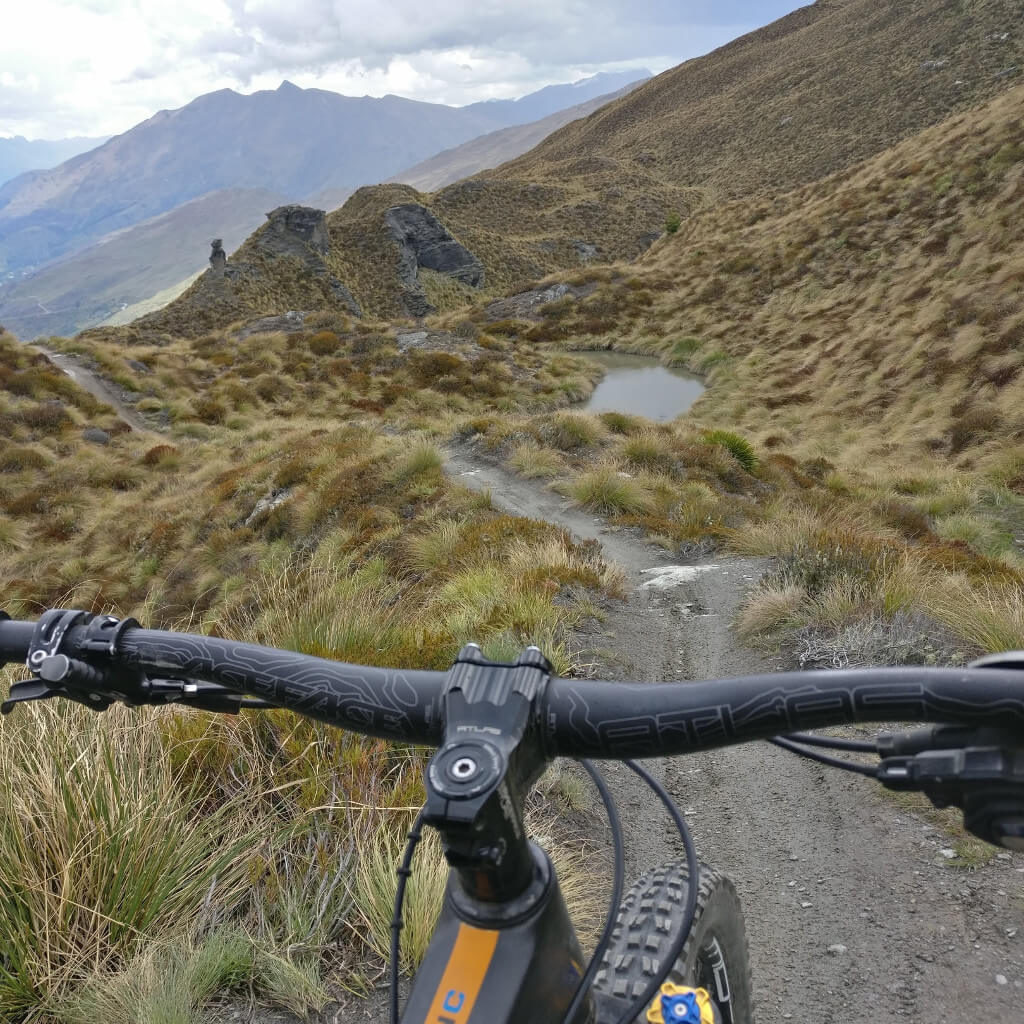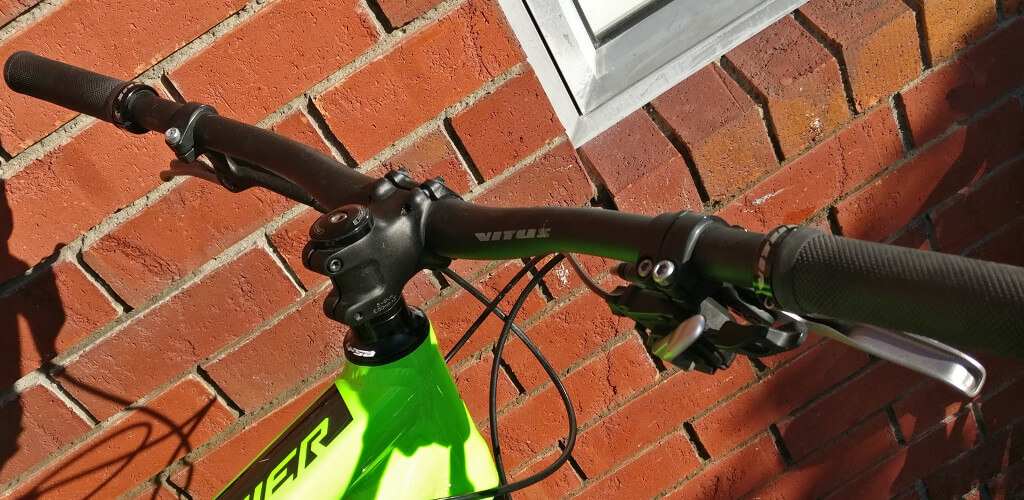Changing the length of a mountain bike’s stem alters your center of gravity on the bike, and it’s handling characteristics. A short stem will feel more confidence inspiring on a descent, and more responsive. A long stem will position your body weight forward, and enable a better seated climbing position, for more pedaling power, and will help keep the front wheel from lifting during steep climbs.
Over the years as mountain bike geometry and design has evolved, there has been a trend towards increasingly short stems on many types of mountain bikes.
This is especially evident in trail bikes – an ever more capable and growing segment of mountain biking.
Bikes have become longer and slacker, with wider bars, and shorter stems – but why is this, and does a longer stem still have a place in mountain biking today?

Short stem vs Long stem
Walk into any bike shop and you’ll find short stems are now commonplace – with 50mm stems and under often the stock standard offering on a trail bike.
I switched to a shorter 50mm RaceFace Atlas stem on my Bronson, and love it.
Important note! Remember to double check what handlebar diameter you’re running, as you have to get the right width for your bar obviously! As I ‘ve bought a 35mm diameter bar (rather than 31.8mm), I went for a 50mm stem with a 35mm diameter.
I see they even have a 35mm Atlas option too, nice. I’d definitely be tempted to try that.
For some context, in years gone by there would be XC bikes running 80-120mm stems, and downhill bikes running 40mm and under.
These days trail/enduro bikes have become super capable, able to climb well, yet able to descend at speed down some pretty chunky trails.
One reason that they’ve evolved into such capable machines is the combination of wider bars and shorter stems.
This gives great stability and control during descending through having more torque in the turning of the bars, and a more direct responsive feel from the shorter stem.
It’s now very common to find trail bikes being ridden with 800mm wide bars and a 30-40mm stem, because of these favorable characteristics when it comes to aggressive trail riding, descending, and features such as jumps and drops.
Hop back on an older bike with very narrow handlebars and a long stem, and it feels incredibly twitchy and far less confidence inspiring on the downhills.
Even some XC riders have dialed back some of the stem lengths and tried running wider bars – however most avid XC riders definitely still run noticeably longer stems than most casual mountain bikers who are more into hitting their local trail network or bike park.
The main reasons for this is that having the weight moved forward somewhat on the bike ensures that the front wheel stays planted on the trail when climbing, and the rider is seated in the perfect position to maximize their pedaling power.
This obviously makes a big difference if you’re interested primarily in riding long cross country trails and long grueling climbs.
For the majority of mountain bikers however, myself included, very often climbing is simply a necessary evil to get to the part that I enjoy most, the downhill run!
So for me, and plenty of other mountain bikers, I much prefer to hit the trails with 800mm wide bars and a 50mm stem, and deal with less than perfect climbing position in favor of the epic fun I know is on once I reach the top of a trail.
What is considered a short stem these days?
In fact 50mm is no longer considered a really short stem. Perhaps I should try a 35mm one for the next upgrade, just to see how it makes the bike feel.
Generally 35mm to 40mm is considered a shorter MTB stem these days, with 50mm still being thought of as a reasonably short stem for mountain biking – though extremely common. 60mm tends to be starting to be on the longer stem side for an enduro/trail mountain bike, which are of course two of the most popular styles of mountain bikes currently.

Does it only effect climbing vs descending?
Not at all.
But it is certainly one of the most immediately noticeable changes in bike handling from changing the stem length.
The shorter stem definitely gives the bike a more responsive feel on the trail, and is well suited to aggressive riding.
When jumping the bike or hitting drops, a shorter stem puts you in a better position to confidently hit these sort of features (that often have painful consequences if we don’t ride them well).
Should I change my stem to a shorter one?
It depends.
If you much prefer descending and hitting jumps, and you’re running a stem longer than 50mm the recommendation I would make would be to try something 50mm or under, you’ll love it.
Of course it makes a huge difference what stem length you are changing from – and what style of mountain bike you have.
For example, if you’re on an older XC mountain bike, with a 100mm stem, changing to a very short 35mm stem will dramatically alter the handling of the bike – and not always for the better, especially as it relates to how that bike is designed to be ridden.
You’ve probably noticed by now that I obviously prefer the shorter stems – and this is absolutely true.
But I’m also not one to blindly follow trends and get buying all the latest bike bling every season.
Plenty of riders consider 50mm stem to be too long, and would have switched to a 35 or 40mm years ago.
But then I’ve been riding my Bronson since late 2013, shortly after it was first released. For those wondering, it is a very capable trail mountain bike – some might say almost stepping into enduro mountain bike territory. Point being, I ride trails with it, I suffer the climbs, and I relish the descents. So for me, a shorter stem works wonderfully. I wouldn’t dream of changing it to anything longer than 50mm.
From back when I bought my mountain bike in 2013, to today, are many years of bike technology improvements, and plenty of marketing hype cycles too.
I just don’t think we constantly need to buy into every new thing that comes along (and yes, the bike industry is fantastic at switching up the “standards” regularly).
At the end of the day, if we have a pretty capable mountain bike, and a love of the sport – that’s enough to get out there and have an awesome experience on the bike.

